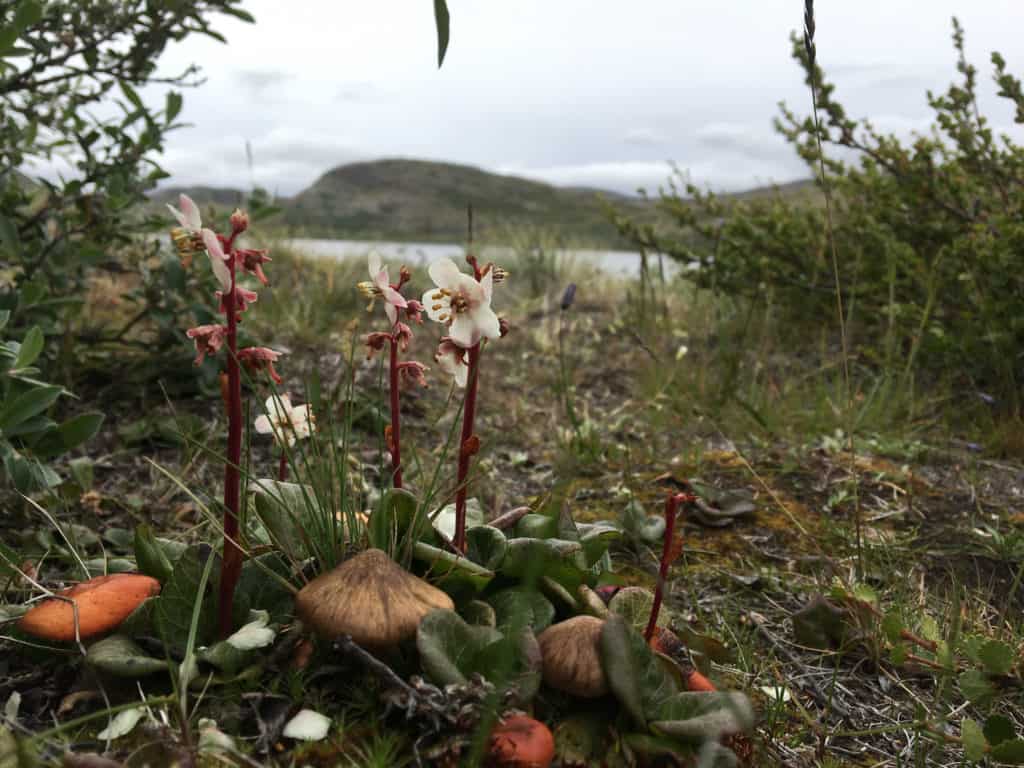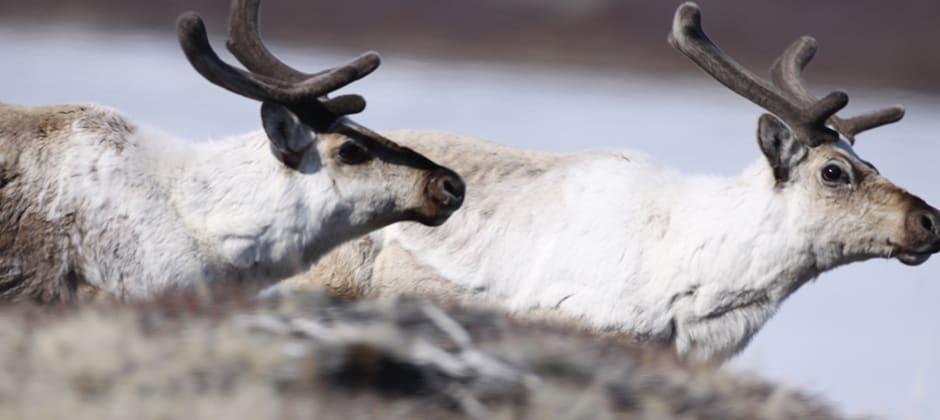Share this article
Caribou, muskoxen benefit rare vegetation
Conservation and management of populations of large herbivores like caribou and muskoxen on the Arctic tundra could help maintain rare plant species under climate change.
Although it sounds strange, most species of vegetation are actually considered rare throughout the world. Common species are a rarity, ecologically speaking.
“It’s sort of a longstanding puzzle,” said Eric Post, a professor at the University of California Davis in the Department of Wildlife, Fish, and Conservation Biology. “How do rare species persist despite being rare?”
Because researchers still struggle to answer this question, they don’t have a great understanding of how climate change will impact rare versus common species.

A muskox in Greenland’s Arctic tundra. Credit: Eric Post, UC Davis
Post led a study published in Scientific Reports looking into how climate change may affect rare species as well as what role large herbivores play in their responses to climate change. Before the study, Post and his colleagues hypothesized that climate change might cause common species to become more common. But when they artificially simulated climate change, they found no real trends in its effects on common or rare species. “It was kind of a wash in the sense that there weren’t any clear patterns, and common and rare species responded unpredictably to warming,” he said.
But they found something very different when they added large herbivores to the picture.

Arctic harebell is a rare wildflower species found at the long-term study site near Kangerlussuaq, Greenland. Credit: Eric Post, UC Davis
For the past 20 years, Post and students have run a large-scale experiment in southwestern Greenland near the village of Kangerlussuaq. In some areas, they put up fencing to exclude caribou (Rangifer tarandus) and muskoxen (Ovibos moschatus). Inside those fences, and on grazed sites next to them, they use small open-topped greenhouses to warm the tundra experimentally.
On both warmed and non-warmed plots inside and outside of the fences, they monitored changes in mushroom, plant and lichen abundance and diversity. The study focused on dynamics of 14 taxa. Five were classifiable as very rare on their plots—a ratio similar to vascular plants on a global scale.
They found no patterns when it came to climate change impacts on rare or common plants. Some plants became more common, and some became rarer. But when caribou and muskoxen were excluded, five rare species became less common, and common species took over the plots.
“What was very clear was that removal of large herbivores disproportionately affected rare taxa,” Post said.

Arctic wintergreen, a rare species, grows among birch and willow shrubs in the study site.
Credit: Eric Post, UC Davis
For Post, the study highlights one more reason to conserve large herbivores.
“The conservation and management of muskoxen and caribou will be important for maintaining the compositional integrity of tundra vegetation as the Arctic continues to warm,” he said. “If the goal is to maintain tundra species diversity, then we need to consider how healthy populations of caribou and muskoxen contribute to that goal.”
Rare species contribute disproportionately to ecosystem function and services because there are so many more rare species than common ones, Post said. Moreover, tundra diversity supports animal diversity by providing resources for other species of herbivores, such as arctic hare (Lepus arcticus) and rock ptarmigan (Lagopus muta) and the carnivores that feed on them, like arctic fox (Vulpes lagopus).
According to the 2021 Arctic Report Card, many caribou populations are declining throughout the Arctic, however, and while data for muskoxen are more limited, some of their populations are declining as well.
“Wherever caribou or muskoxen are declining, regardless of the cause, the implications are that the system they are part of may experience amplified effects of climate change,” Post said.
Header Image:
Caribou have been declining in Greenland, which can impact growth of rare species of Arctic vegetation.
Credit: Eric Post, UC Davis








